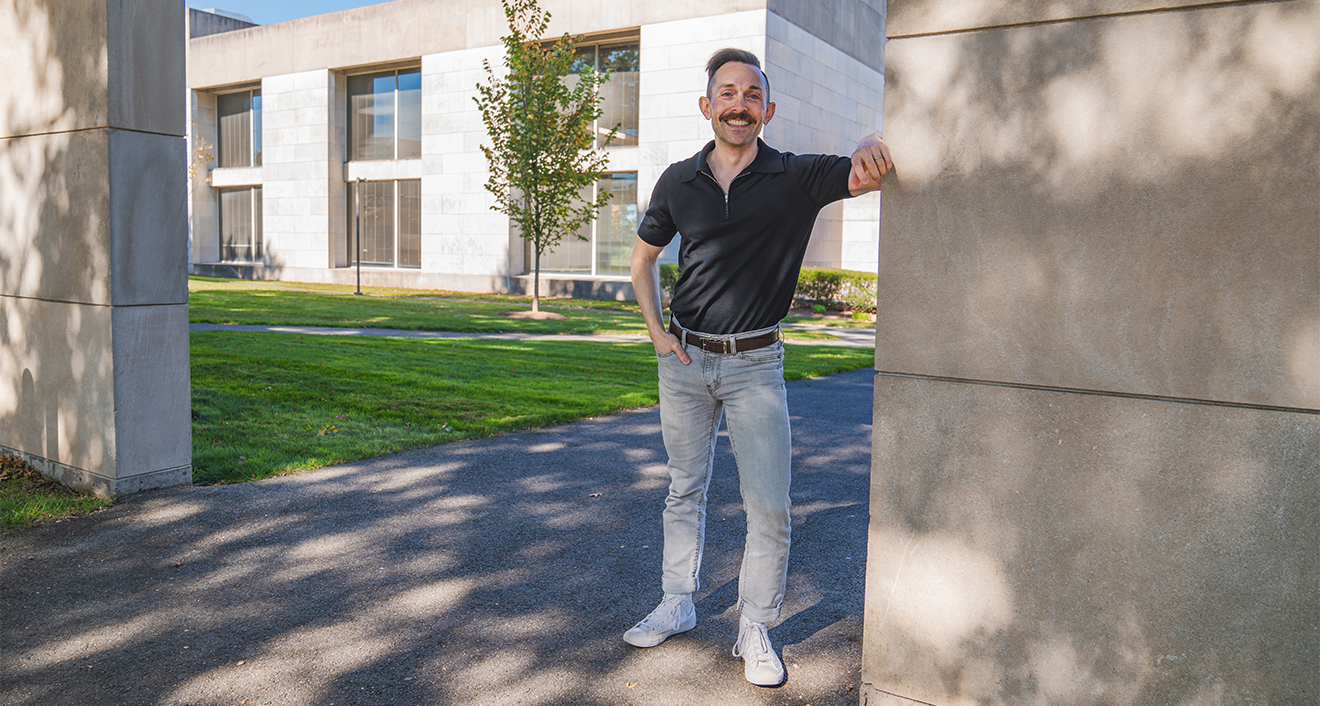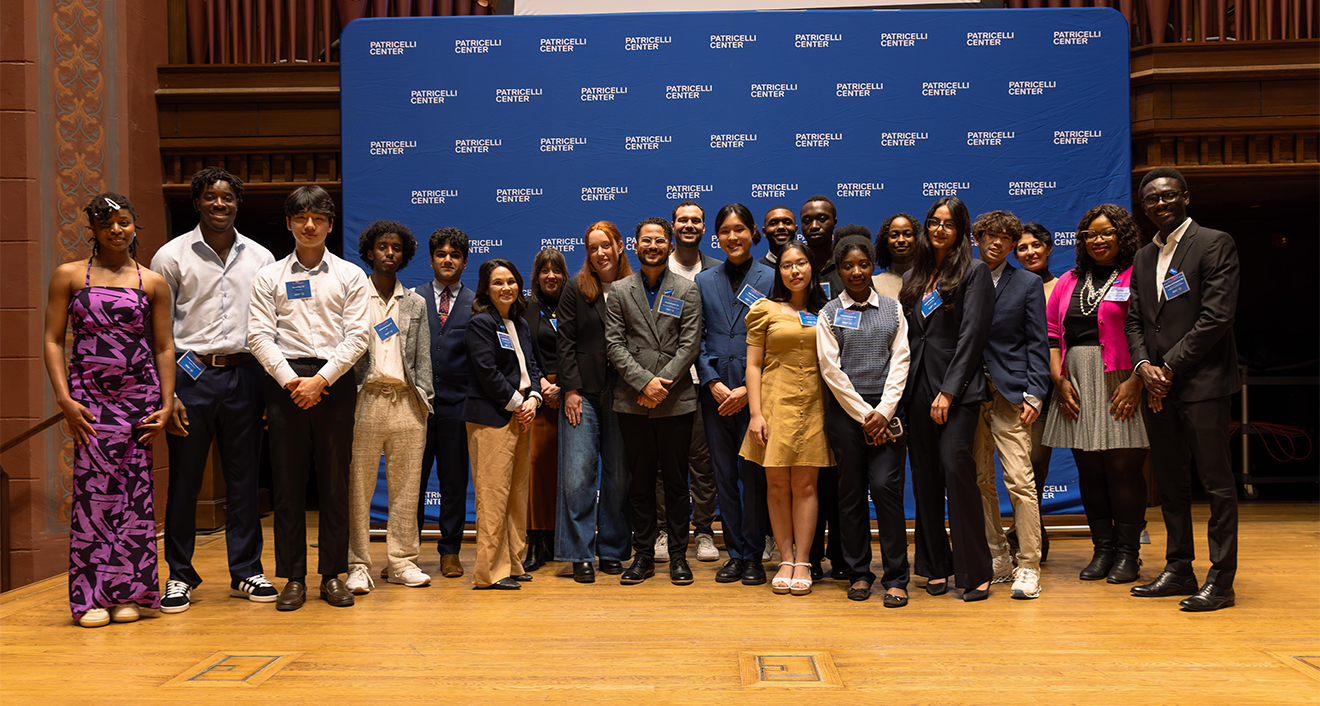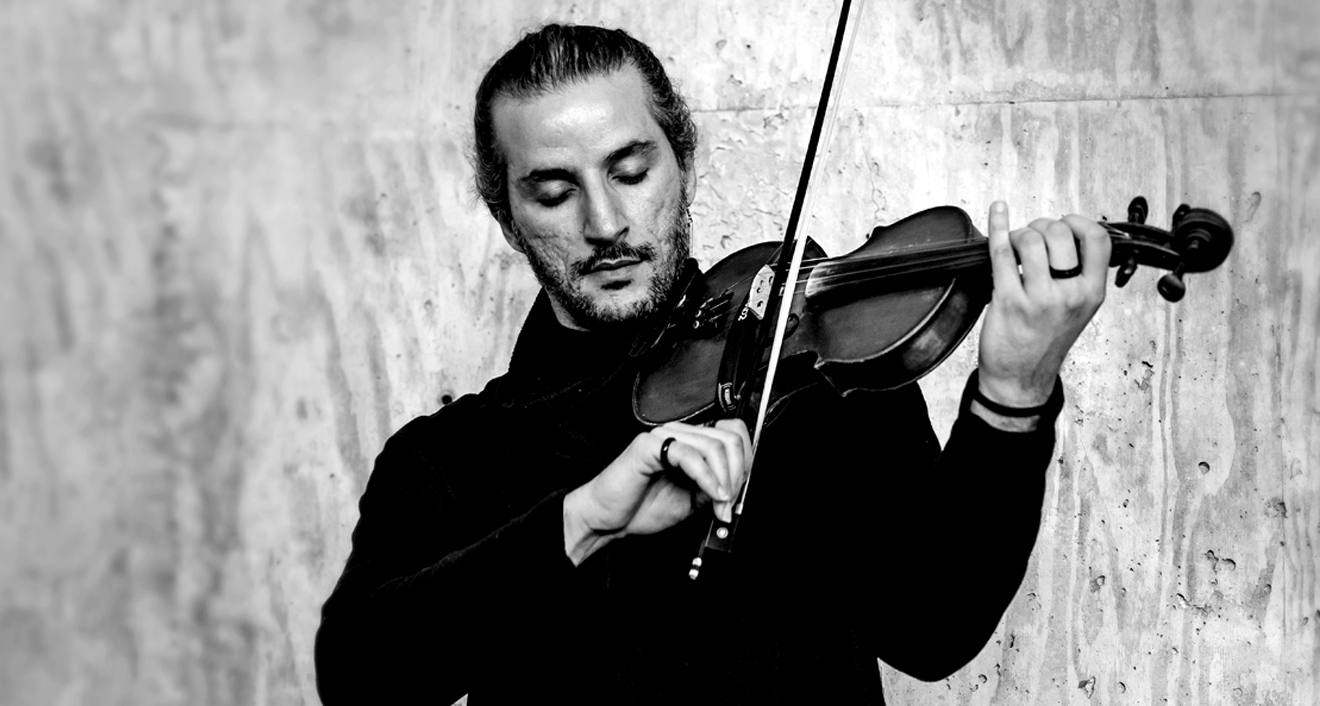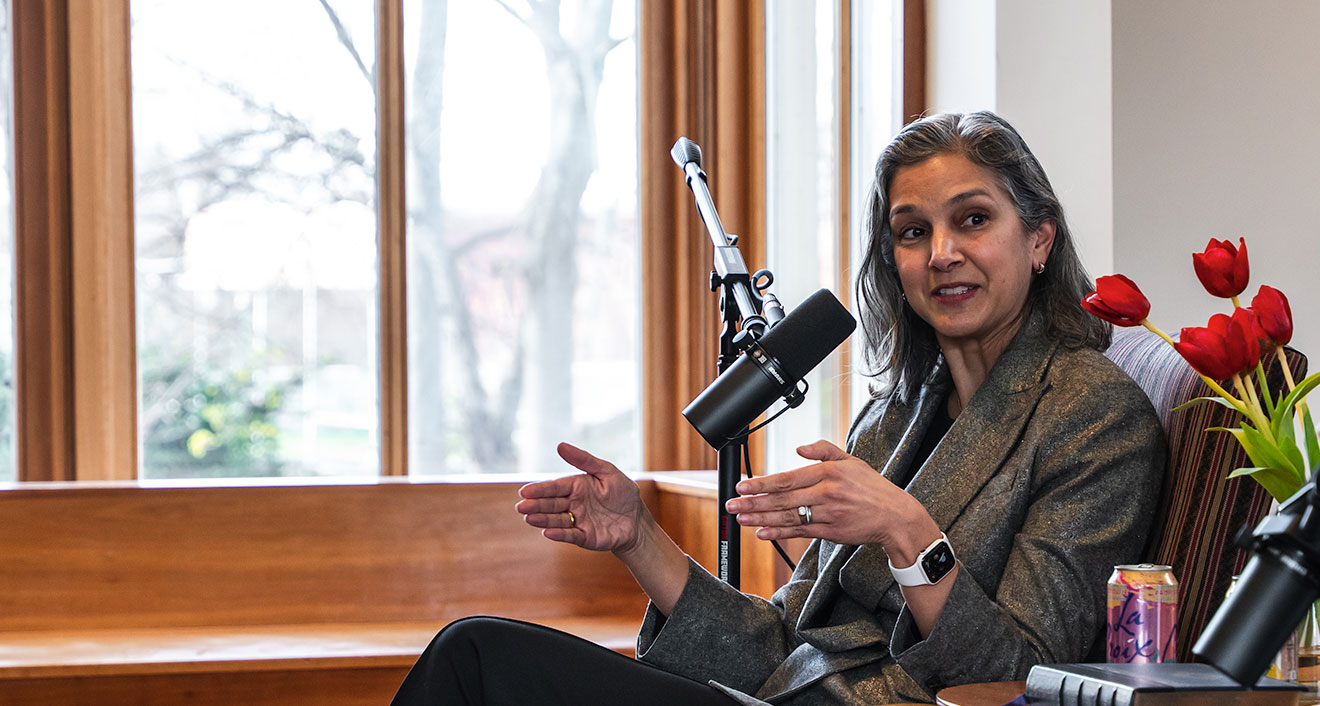
Vanity Fair Editor Speaks at Shapiro Center Series

Radhika Jones’s path to becoming the top editor at Vanity Fair was not linear, she said at the “Art of Editing” event hosted by the Shapiro Center for Creative Writing and Criticism on April 8. During the hour-long talk, Jones shared her career highlights and experiences in conversation with Merve Emre, the Shapiro-Silverberg University Professor of Creative Writing and director of the Shapiro Center, which brings visionary editors to campus to share their insights with students, faculty, and staff.
In introducing Jones, Emre said, “since 2017, when she succeeded Vanity Fair's longtime editor Graydon Carter, she has been widely celebrated for revitalizing the magazine, introducing an unprecedented diversity of contributors and subjects into its pages, from her first issue featuring a cover with the writer-actress Lena Waithe, to the iconic portrait of Breonna Taylor by the painter Amy Sherald in 2020. Along with award-winning profiles, cultural commentaries, and political journalism, her career has been amazingly distinctive and vibrant.”
To kick of the conversation, Emre asked Jones to share her circuitous career path. After graduating from college with a degree in English, Jones said she was not certain about her next move. “I felt very well read, but not equipped or ready to decide what I wanted to do with my life,” she said. Jones taught English in Taiwan for a year before moving to Russia just a few years after the fall of the Soviet Union. During that “chaotic” time, “there was a sense of possibility there,” Jones recalled.
She landed a job at the Moscow Times, an English language paper that focused primarily on business reporting but also culture. She started as a copy editor—an editorial function that she still loves. While she stayed in Moscow only two years, the experience was transformative. “It really had this outsized effect on me and I liked working with the team, I liked having a deadline. I liked writing headlines and there were very specific paper functions that I enjoyed.”
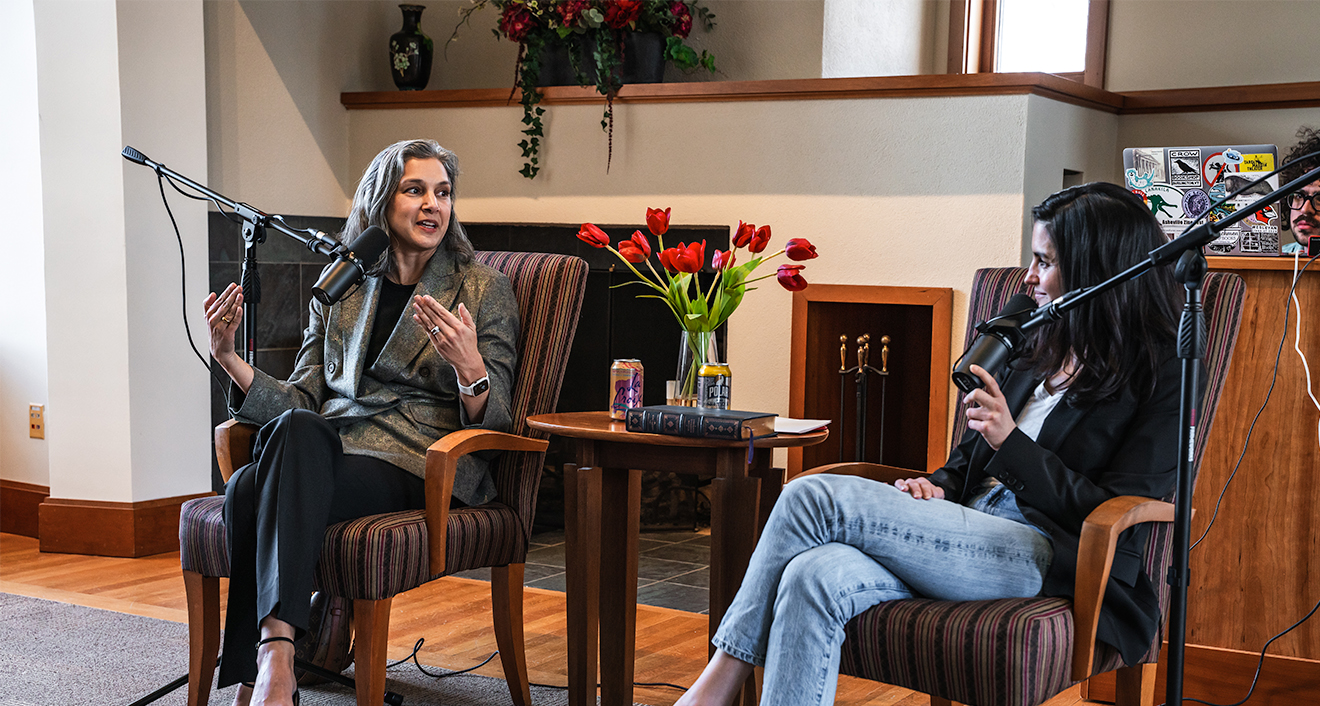
After that early stint, Jones returned home to pursue a PhD in comparative literature at Columbia University. Though she enjoyed being a student and reading again, she still itched to do something practical. She started copy editing at Grand Street, a now defunct literary magazine, and later Artforum, a magazine about contemporary art. “That’s where I learned how to edit,” she recalled, under the tutelage of an editor who walked her through the process by posing questions like, “What do you think about the piece? How are you going to talk to the writer about the piece? Where are the weak spots?”
While still working on her dissertation, Jones moved on to the Paris Review as managing editor, where she had the opportunity to interview the famed Australian novelist Peter Carey. After three years there, during which time the publication won a National Magazine Award, a friend asked if she’d be interested in an arts editor position at TIME. “This would be a very different audience proposition from anywhere else I've been, and there are ways to start dialogues and conversations with a magazine like TIME, at a different scale, and that was intriguing to me,” she said.
Put in charge of features like “Person of the Year,” Jones recalled when the magazine chose to profile Facebook founder and Meta CEO Mark Zuckerberg. He “has proved to be a very important figure in American life and culture,” she said, recalling debates over who would be chosen for that coveted cover spot. “Those kinds of choices, that kind of reporting and access and the conversations that would come out of it—that has always been interesting to me,” she said. Another highlight was choosing Jonathan Franzen for the cover, which influenced the way other media covered his novels.
Jones worked as editorial director of the books section at The New York Times before moving to Vanity Fair, where there was a strong focus on celebrity. “Our mission at Vanity Fair is to investigate the intersection of power and personality,” said Jones. “There is a world of celebrity coverage and even news coverage and politics coverage that lives on that surface. But our goal is to get beneath it…by fully gaining trust and access and asking them questions that lead to something illuminating.”
Jones was particularly proud of the magazine’s profile of U.S. Representative Alexandria Ocasio-Cortez—otherwise known as AOC. She was featured on the cover in 2020, before the election. The interview, in which AOC talked frankly about her politics and threats she faced, has proved prescient. “She talked so specifically about what Democrats needed to do to convince people that they're interested in their day-to-day lives and making their lives better,” said Jones. “All of that message change she was doing in 2020, it has come back around.”
After seven years at VF, Jones is stepping down. Still, she does not have a clear path ahead. “I'm ready to do some things that I've been putting off and I don't want to put off anymore,” she said. “Writing is one of them. I enjoy writing. I actually did a cover story on Barbra Streisand which was very fun and I went to Barbara's house. It's such a blast. We had great time and that was wonderful. And that was kind of like a little box to check.”
At the end of the hour, Jones took questions from the audience, including students. The conversation will be available via the LitHub podcast. This next event in the series will be a conversation with Leo Carey on May 1.


